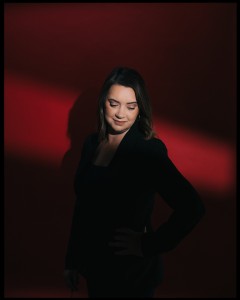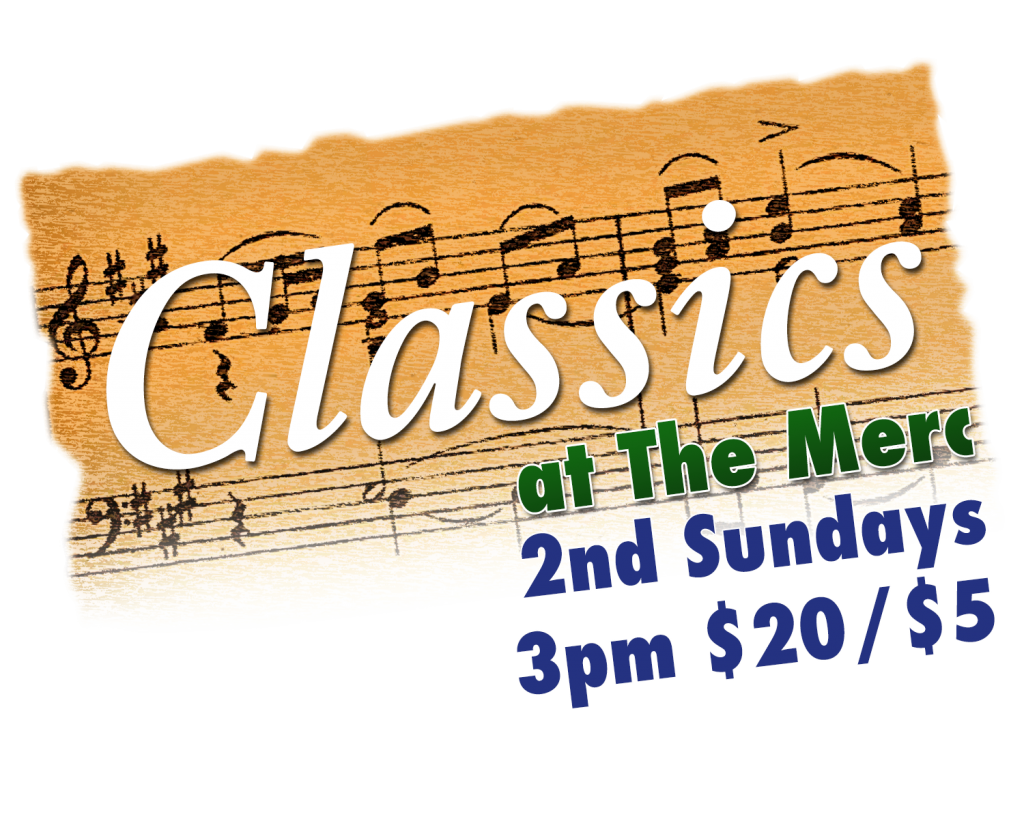
Sunday, February 23, 2025, 3:00 p.m.
Gershwin Performing Arts Center | Murrieta Mesa High School
Today’s Program
Gustav Mahler (1860 – 1911)
Symphony No. 1 in D Major
Edition for chamber ensemble by Klaus Simon
- Langsam. Schleppend
- Kräftig bewegt, doch nicht zu schnell
- Feierlich und gemessen, ohne zu schleppen
- Stürmisch bewegt
There will be no intermission in this afternoon’s concert.
Thanks to the Murrieta Valley Unified School District for their support of this concert.
About Our Artistic Director and Conductor
Dana Zimbric is marking her 14th season as Artistic Director and Conductor of the California Chamber Orchestra.
In addition to her work with us, she is Music Director of the Classics Philharmonic Orchestra, which performs educational programs for San Diego area students, and recently made her conducting debut with the San Diego Symphony.
Dana’s past conducting experience includes positions with the San Diego Youth Symphony, Avante Chamber Orchestra, Orchestra Nova San Diego, and the University of Wisconsin Chamber and Symphony Orchestras.
An accomplished clarinetist, Dana holds a Bachelor of Music in Clarinet Performance and a Master of Music in Orchestral Conducting from the University of Wisconsin. She lives in San Diego with her husband and two young daughters.
Members of the California Chamber Orchestra
Violin I
Ai Nihira Awata (Concertmaster)
Evan Pasternak
Tiffany Modell
Violin II
Missy Lukin (Principal)
Angela Xing
Batya MacAdam-Somer
Viola
Michael Molnau (Principal)
Linda Piatt
Annabelle Terbetski
Cello
Chia-Ling Chien (Principal)
Elizabeth Brown
Bass
PJ Cinque (Principal)
Flute
Teresa Perrin (Principal)
Oboe
Andrea Overturf (Principal)
Clarinet
Sheryl Renk (Principal)
Frank Renk
Bassoon
Leyla Zamora (Principal)
Horn
Darby Hinshaw (Principal)
Tricia Skye
Trumpet
Ray Nowak (Principal)
Percussion
Beverly Reese Dorcy (Principal)
Harmonium
Alison Luedecke (Principal)
Piano
Dana Burnett (Principal)
Orchestra Personnel Manager and Music Librarian
Michael Molnau
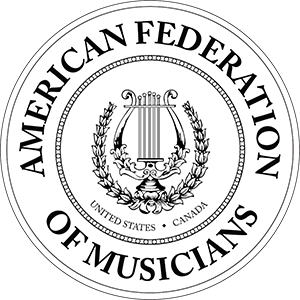
California Chamber Orchestra musicians in this concert are members of The American Federation of Musicians, Local 325
Program Notes
Austrian composer Gustav Mahler (1860-1911) wrote his First Symphony between 1887 and 1888 while he was in his twenties. At the time, Mahler gained recognition as a conductor rather than as a composer, holding conducting positions in Leipzig and Budapest. Like many of his later symphonies, this first large-scale orchestral work reflects Mahler’s deep love of nature, his fascination with folk music, and his ability to weave personal emotions into symphonic form.
The First Symphony premiered in 1889 in Budapest and originally included five movements, featuring an additional movement titled Blumine that Mahler later removed. While the work follows a traditional four-movement symphonic structure, it also carries elements of a tone poem—a musical narrative—which Mahler initially reinforced by providing a written program to audiences. He later abandoned this practice, preferring that the music speak for itself.
The symphony opens with an ethereal introduction, evoking the sounds of nature. Mahler’s orchestration creates the impression of a vast, awakening world, with distant hunting calls in the horns and delicate, shimmering strings. The main theme of this movement is drawn from Mahler’s own Songs of a Wayfarer, specifically Ging heut’ Morgen über’s Feld (“I Walked Across the Fields This Morning”). This melody, first presented by the woodwinds, expresses a simple, joyful love for nature. Yet Mahler juxtaposes this beauty with moments of tension and grandeur, foreshadowing the emotional contrasts that define the entire symphony.
The second movement is a lively dance, based on the Austrian Ländler, a rustic folk dance that Mahler transforms into a boisterous waltz. This movement reflects the influence of Mahler’s Austrian upbringing, as well as the rich café music culture of Vienna. The contrast between the lively Ländler and the elegant waltz provides a sense of nostalgia, as if recalling a distant memory of childhood or simpler times.
Mahler’s third movement is strikingly different in character. It opens with a solo double bass playing the familiar tune of Frère Jacques but in a haunting minor key. This funeral march, eerie and unsettling, is interrupted by contrasting sections, including a klezmer-like passage that reflects Mahler’s Jewish heritage and a reference to another Songs of a Wayfarer melody, Die zwei blauen Augen von meinem Schatz (“The Two Blue Eyes of My Beloved”). This juxtaposition of musical styles, from somber to playful, creates a dreamlike, almost stream-of-consciousness effect, as if Mahler is piecing together fragments of past experiences.
The final movement erupts with a dramatic outburst—what Mahler called “a cry of a deeply wounded heart.” This tempestuous music, filled with stormy turbulence, takes the listener on an intense emotional journey. Mahler originally described the finale with the phrase Dall’Inferno al Paradiso (“From Hell to Heaven”), a fitting depiction of the movement’s trajectory from despair to triumph. In a masterful symphonic conclusion, Mahler brings back themes from earlier movements, even hinting at Blumine, before leading to an exhilarating, triumphant ending. The symphony closes in radiant D major, with a resplendent brass chorale that seems to proclaim victory over the struggles that came before.
This performance features a chamber orchestra arrangement by Klaus Simon (b. 1968). Inspired by the tradition of Arnold Schoenberg’s Verein für musikalische Privataufführungen (Society for Private Musical Performances), Simon has created numerous reduced orchestrations of large-scale works by Mahler, Schoenberg, Berg, and Ravel. His adaptations allow for intimate performances of these masterworks while maintaining their expressive depth and dramatic impact.
Mahler’s First Symphony remains one of his most beloved works, a testament to his ability to blend folk elements, personal narrative, and symphonic grandeur into a compelling and deeply human musical experience.
— Dana Zimbric
Thank You to Our Sponsors and Donors
Society Sponsors
Judy Call
Prudhomme Associates, CPAs
City of Temecula
Leslie and Joseph Waters
Season Sponsors
Mark Margolin
Nicola Helm & Stephen Ryder
Education Sponsors
Craig Carper, LaPointe Wealth Management
Murrieta Rotary
Concert Sponsors
Susan & Ken Dickson
Walt Fidler
Soloist’s Circle
Kiyoe MacDonald
Concertmaster’s Circle
Terry Kvitky
Kathryn McCarty
Barry Weiss
Rudy Wokoek
Principal’s Circle
John Welniak
Musician’s Circle
Candace Flint
Karen Hartnett
Susan Humphrey
Sarah Ivar
Martha Minkler
Sana Quijada
Join us at The Merc on the 2nd Sunday of each month for recitals by some of the region’s best musicians. These intimate performances include opportunities to hear from the musicians about their art, their careers, and the music being performed.
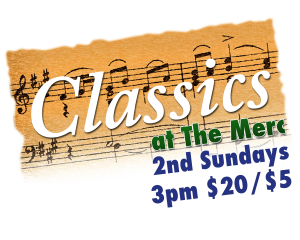
Windsong Consort Woodwind Trio
Cindy Anne Broz, flute
Cindy Smit, oboe
Katherine Ortega, bassoon
Carl Stamitz (1746 – 1801)
Trio in G Major for 2 flutes and cello
- Allegro Moderato
- Andante
- Rondo
Jurriaan Andriessen (1925-1996)
Trio for flute, oboe and bassoon
- Allegro Giocoso
- Lento
- Allegro Scherzando
INTERMISSION
Antonin Dvorak (1841-1904)
Humoresque from Op. 101 #7
Roma Cafolla (b.1949)
Sonata for Wind Trio (Capers)
- Discorso
- Concordia
- Loquacita
Joseph Haydn (1732-1809)
Four London Trios (Divertimenti) for 2 flutes and cello
Trio No.4 in C Major, Hob IV:1
Finale
Gary Schocker (b. 1959)
Three’s a Crowd
- How do you do?
- Let’s discuss
- I hear you
- Then on the other hand,
- Outta Here

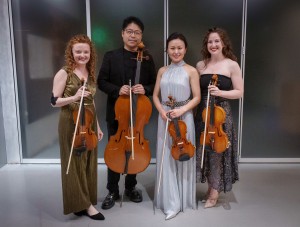
Julia Pautz and Jing Yan Bowcott, violins
Sing Jin Lee, viola
Xian Zhuo, cello
Kian Ravaei (b. 1999)
Family Photos (2021)
Florence Price (1887 – 1953)
Three Songs from Five Folksongs in Counterpoint
1. Oh My Darling Clementine
2. Drink to Me Only With Thine Eyes
3. Shortnin’ Bread
Dmitri Shostakovich (1906 – 1975)
Two Pieces for String Quartet
1. Adagio
2. Allegretto
Stephan Koncz
A New Satisfaction (Featuring Gymnopedie No. 1 by Eric Satie)
INTERMISSION
Felix Mendelssohn (1809 – 1847)
String Quartet No. 2, Op. 13
1. Adagio – Allegro vivace
2. Adagio non lento
3. Intermezzo: Allegretto con moto – Allegro di Molto
4. Presto – Adagio non lento
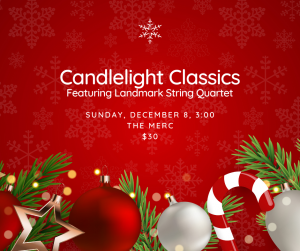
Mitzuki Takagi, violin
Steve Chiu, violin
Jennifer Wu, viola
Mark Basset, cello
Trevor Dolce, percussion
Steve C. Chiu (b. 1984)
Four Legendary Beauties of Ancient China: Wang Zhaojun (“Fallen Geese”)
Richard Wagner (1813 – 1883) arr. Jennifer Wu
Siegfried Idyll
INTERMISSION
Please join us in the Gallery for a holiday reception
Peter Ilyich Tchaikovsky (1840 – 1893) arr. Lynne Latham
Nutcracker Suite Excerpts
1. Overture
2. March
3. Dance of the Sugar Plum Fairy
4. Arabian Dance
5. Waltz of the Flowers
John Williams (b. 1932)
Home Alone Suite
1. Star of Bethlehem (arr. Max Mueller)
2. Somewhere in My Memory (arr. Larry Moore)
Alan Silvestri (b. 1950) and Glen Ballard (b. 1953) arr. Larry Moore
Polar Express Medley
1. Believe
2. The Polar Express
3. When Christmas Comes to Town
4. Spirit of the Season
Bethany Grace
Batya MacAdam-Somer
Ruslan Biryukov
Tim McNalley
Joe McNalley
Johann Herbaut (d. 1530)
Von hertzen dein
Pierre Passereau (1509-1547)
Il est bel et bon
Giovanni Pierluigi da Palestrina (1525 – 1594)
Super flumina Babylonis
Josquin des Prez (c.1455-1521)
El Grillo
Antonio Vivaldi (1678-1741)
Winter from The Four Seasons
Vittorio Monti (1868-1922)
Czardas
Traditional (c. 1850)
Rollin Down to Old Maui
INTERMISSION
Traditional
Lark in the Morning
Edward Elgar (1857-1934)
Nimrod from Enigma Variations
Charles L Johnson (1876-1950 )
G Rag and Crazy Rag
Charles Mingus (1922-1979)
Haitian Fight Song
Cachao (1918-2008 )
Oye Cómo Va
About the Hutchins Consort
Now in their 25th Season, The Hutchins Consort is an innovative violin chamber ensemble which performs on the rare and beautiful Hutchins violins.
The distinctive lineup of eight meticulously designed, scientifically-tested violins were crafted by Dr. Carleen Hutchins, a dynamic woman whose contributions made an indelible mark on science, music, and women’s history.
Fueled by the virtuosity of world-class artists, The Hutchins Consort busts through chamber music norms with an exciting fusion of diverse styles and collaborations. Their contagious joy and adventurous spirit make them a trailblazing force breathing new life into familiar melodies and exploring uncharted sonic territories.
From Baroque opuses to modern experimental sounds, their repertoire of over 400 arrangements showcases the full spectrum of the Hutchins instruments. With their unique instrumentation, The Hutchins Consort can recreate the rich textures and dynamic intricacies of a full orchestra, all within the intimacy of a chamber ensemble.
Sonata XIV in F Major…………………….…………………………………………František Xaver Dušek (1731-1799)
- Allegro
- Andantino grazioso
- Allegro
Sonata No. 41 in G Major…………………………………………………………………Leopold Koželuch (1747-1818)
- Allegro
- Andante espressivo
- Rondo (Allegretto)
For Stephen Heller, No. 9: Sanft bewegt. Nicht schnell.……………………..Theodor Kirchner (1823-1903)
Dreaming, Op. 15, No. 3…………………………………………………………………………….Amy Beach (1867-1944)
Intermezzo (in the style of Brahms)………………………………………………………Alfredo Casella (1883-1947)
INTERMISSION
Chopinesque…………………………………………………………………………………………………..Jon Batiste (b. 1986)
Techno Etudes Nos. 1 & 4…………………………………………………………………………..Karen Tanaka (b. 1961)
Butterfly………….……………………………………………………………………………………………Mike Garson (b. 1945)
Nowtude in F# Major………….………………………………………………………………………………………..Mike Garson
Sonatina No. 3 in d minor, Op. 149………………………………………………………Stephen Heller (1813-1888)
- Lentamente, con espressione
- Intermezzo: Allegretto quasi Andante
- Finale: Allegro energico
About the Performer
Called “phenomenal” by the late music critic Alan Rich (SoIveHeard.com), and hailed as one of the “local heroes” of the Los Angeles music scene (LAcitybeat.com), pianist Danny Holt brings his boundless energy and wit to unique interpretations of new music, 20th-century music, and obscure, unusual, and neglected repertoire from past centuries.
Holt performs around the globe in concert halls (Carnegie Hall, Walt Disney Concert Hall, Hollywood Bowl), clubs (Joe’s Pub, The Blue Whale, Copenhagen Jazzhouse) art galleries (MASS MoCA, Hammer Museum), churches, living rooms, and wherever else he can find a piano and someone to listen. Known for his no-holds-barred style, he has been called “the classical music equivalent of an extreme sports athlete” (The Record) and “an artistic maverick who isn’t afraid to tackle tradition” (WWLP-TV).
Danny Holt has held fellowships at the Bang On a Can Summer Music Institute, the Weill Music Institute at Carnegie Hall, and New England Conservatory’s Summer Institute for Contemporary Performance Practice, and he has worked with such composers as Steve Reich, Louis Andriessen, Christian Wolff, James Tenney, Graham Fitkin, David Lang, Michael Gordon, Augusta Read Thomas, and Michael Finnissy, among others. He also proudly champions the works of emerging composers.
He has received awards and grants from ASCAP, Yamaha, the American Composers Forum, the Yvar Mikhashoff Trust for New Music, and others; and has performed with the Los Angeles Philharmonic and the Los Angeles Philharmonic New Music Group, Blue Man Group, the Bang on a Can All-Stars, the California EAR Unit, and the Calder Quartet. He can be heard on the Innova Recordings label, pfMENTUM, New World Records, Deutsche Grammophon, and L’st records.
Holt’s acclaimed 2009 CD, Fast Jump (Innova Recordings) was produced by Mike Garson (pianist for David Bowie, Nine Inch Nails, No Doubt, Smashing Pumpkins, etc.) Gramophone called the album “a compelling showcase for Holt’s innate virtuosity and gregarious temperament” and WNYC’s John Schaefer selected the CD as one of the best releases of 2009. Recent releases include Piano Music of Mike Garson (2021, Innova Recordings) and an album of rarely-heard sonatas by female composers of the late 19th and early 20th centuries, Trailblazers (2024, Acis Productions.)
Among Holt’s ambitious solo projects is The Piano/Percussion Project. More than 25 composers have created new works for Holt’s unique setup in which he plays piano and an array of percussion instruments simultaneously. When he’s not performing cutting-edge contemporary music, Holt enjoys curating programs of obscure repertoire from the 18th and 19th centuries, bringing rarely-performed works and the unheard stories of lesser-known composers to audiences. He also enjoys performing on historical pianos (sometimes more than 200 years old!) and modern replicas of early pianos.
Holt holds degrees from California Institute of the Arts, Hampshire College, Smith College, and Interlochen Arts Academy. He is also a percussionist, composer, producer, and educator. He recently moved to East Machias, but maintains strong ties to Southern California, where he runs Desert Hot Springs Classical Concerts, an annual concert series for residents and visitors to the Palm Springs area. In addition to maintaining a busy private studio of piano students in Southern California for over two decades, Holt was the chair of the music program at The Academy of Creative Education at the Oakwood School, and was Scholar-in-Residence at Harvard-Westlake School’s Kutler Center for Interdisciplinary Studies and Independent Research. He also previously taught at CalArts, Smith College, College of the Desert, Norco College, and the Osher Lifelong Learning Institute; and he performs and gives guest lectures at colleges and universities throughout the U.S. and abroad.
For more information, please visit: www.dannyholt.net

Sunday, September 22, 2024, 3:00 p.m.
Gershwin Performing Arts Center | Murrieta Mesa High School
Today’s Program
Diane Wittry (b. 1964)
Summer Sun (2021) (West Coast Premiere)
Ottorino Respighi (1879 – 1936)
Trittico Botticelliano
1. La Primavera
2. L’adorazione dei Magi
3. La nascita di Venere
INTERMISSION
Frederick Deliu (1862 – 1934), arr. Robert Threlfall
Irmelin Prelude
Igor Stravinsky (1882 – 1971), arr. Paul Leonard Schaffer
- Introduction
- Prelude & Dance of the Firebir
- Rondo
- Infernal Dance
- Lullaby
- Final Hymn
Thanks to the Murrieta Valley Unified School District for their support of this concert.
About Our Artistic Director and Conductor
Dana Zimbric is marking her 14th season as Artistic Director and Conductor of the California Chamber Orchestra.
In addition to her work with us, she is Music Director of the Classics Philharmonic Orchestra, which performs educational programs for San Diego area students, and recently made her conducting debut with the San Diego Symphony.
Dana’s past conducting experience includes positions with the San Diego Youth Symphony, Avante Chamber Orchestra, Orchestra Nova San Diego, and the University of Wisconsin Chamber and Symphony Orchestras.
An accomplished clarinetist, Dana holds a Bachelor of Music in Clarinet Performance and a Master of Music in Orchestral Conducting from the University of Wisconsin. She lives in San Diego with her husband and two young daughters.
Members of the California Chamber Orchestra
Violin I
Kate Hatmaker (Concertmaster)
Kenneth Liao
Sarah Schwartz
Violin II
Missy Lukin (Principal)
Isaac Allen
Angela Xing
Viola
Michael Molnau (Principal)
Linda Piatt
Greg Perrin
Cello
Andrew Hayhurst (Principal)
Elizabeth Brown
Bass
Sam Hager (Principal)
Flute
Pam Martchev (Principal)
Oboe
Rong-Huey Liu (Principal)
Clarinet
Frank Renk (Principal)
Bassoon
Ryan Simmons (Principal)
Horn
Darby Hinshaw (Principal)
Trumpet
Elizabeth Howard (Principal)
Trombone
Sean Reusch (Principal)
Timpani
Beverly Reese Dorcy (Principal)
David Whitman
Harp
Elena Mashkovtseva (Principal)
Piano
Brian Verhoye (Principal)
Orchestra Personnel Manager and Music Librarian
Michael Molnau

California Chamber Orchestra musicians in this concert are members of The American Federation of Musicians, Local 325
Program Notes
We begin today’s concert with the West Coast Premiere of Summer Sun (2021) by Diane Wittry. Born in California, Ms. Wittry is celebrated as a conductor, author, teacher, and composer. Composed during the Covid pandemic, Summer Sun evokes, in the composer’s words, “the steam from the heat rising like a cloud from the pavement as the morning sun sizzles and shimmers.” Today’s performance by the California Chamber Orchestra is among the first live renditions of this work.
Next, we present Trittico Botticelliano (1927) by Italian composer Ottorino Respighi, inspired by three famous early Renaissance works by artist Sandro Botticelli.
The first movement is inspired by Botticelli’s Primavera (c. 1482), which depicts a lush orchard scene with fruit-filled trees and flowers covering the ground. The figures include Mercury, the Three Graces, Venus, Cupid, Flora, Chloris, and Zephyrus. Respighi’s musical interpretation captures the vibrant energy of spring with high trills and quick, playful motifs shared between the strings and woodwinds.
The second movement draws from Botticelli’s L’Adorazione dei Magi, illustrating the Biblical story of the three kings following a star to present gifts to the baby Jesus. Respighi weaves the familiar tune Veni Emmanuel (O Come, O Come Emmanuel) throughout the movement.
The final movement, La Nascita di Venere (The Birth of Venus), reflects Botticelli’s famous painting of the goddess Venus emerging from the sea. Respighi mirrors the rolling waves with a repeating string motif, while the upper woodwinds float in and out like gentle breezes. As Venus approaches the shore, the dynamics swell before gradually returning to the peaceful undulation of the sea, which slowly calm to stillness.
The second half of the concert begins with the beautiful Irmelin Prelude by English composer Frederick Delius (1862–1934). Irmelin was Delius’ first opera, combining two folktales—The Princess and the Swineherd and Irmelin. The opera tells the story of Princess Irmelin, who dreams of a heroic suitor. In the final act, she meets him disguised as a swineherd, and they immediately fall in love, concluding the opera with a romantic duet. Despite early performances, Irmelin achieved limited success.
In the final years of his life, when Delius became blind and paralyzed, he relied on the artistic support of the young English composer Eric Fenby. Fenby became Delius’ “compositional hands,” enabling Delius to continue creating music. It was through this partnership that Delius returned to Irmelin and created this short prelude based on the original opera. Characterized by pastel-colored orchestration, Irmelin Prelude features rising and falling woodwind solos.
We close with selections from an orchestral reduction of Stravinsky’s Firebird Suite (1945) Igor Stravinsky’s The Firebird Suite (1945), a ballet score originally written for Sergei Diaghilev’s Ballets Russes, based on Russian folktales.
In the ballet, Prince Ivan hunts in an enchanted forest (Introduction) and captures the magical Firebird, who pleads for her release. In exchange, she promises to aid the prince in the future. Ivan agrees, and the Firebird gives him a magical feather (Dance of the Firebird). The prince continues his journey, discovering 13 princesses held captive by the evil King Kashei (Rondo). The princesses reveal that Kashei turns his enemies to stone. With the Firebird’s feather, Ivan is protected. The prince engages in a fight with the king when the Firebird returns, enchanting the king and his ogres. She casts a spell to make them dance themselves into exhaustion (Infernal Dance). The Firebird then lulls them to an eternal sleep (Lullaby), freeing the princesses and Kashei’s stone victims. In the Final Hymn, the celebration of freedom begins.
— Dana Zimbric
Thank You to Our Sponsors and Donors
Society Sponsors
Judy Call
Prudhomme Associates, CPAs
City of Temecula
Leslie and Joseph Waters
Season Sponsors
Mark Margolin
Nicola Helm & Stephen Ryder
Education Sponsors
Craig Carper, LaPointe Wealth Management
Murrieta Rotary
Concert Sponsors
Susan & Ken Dickson
Walt Fidler
Soloist’s Circle
Kiyoe MacDonald
Concertmaster’s Circle
Terry Kvitky
Kathryn McCarty
Barry Weiss
Rudy Wokoek
Principal’s Circle
John Welniak
Musician’s Circle
Candace Flint
Karen Hartnett
Susan Humphrey
Sarah Ivar
Martha Minkler
Sana Quijada
Join us at The Merc on the 2nd Sunday of each month for recitals by some of the region’s best musicians. These intimate performances include opportunities to hear from the musicians about their art, their careers, and the music being performed.
Greg Perrin, viola
Teri Perrin, flute
François Devienne (1759 – 1803)
Duo No. 1 in C minor for Flute and Viola
- Allegro molto con espressione
- Rondo
Malcolm Arnold (1921 – 2006)
Duo for Flute and Viola
- Andante quasi allegretto
- Allegro
- Allegretto ma non troppo
INTERMISSION
Jean Sibelius (1865 – 1957)
Duo for Flute and Viola
- Comodo
W. A. Mozart (1756 – 1791)
Duo I for Flute and Viola
- Allegro
- Adagio
- Rondeau Allegro
Todd Rewoldt, saxophone
Lesi Mei, piano
Paul Bonneau (1918-95)
Caprice en forme de Valse
Alfredo D’Ambrosio (1871-1914)
Canzonetta
Mark Kostabi (b. 1960)
Time Lingers
Eugene McBride (b. 1944)
Altima: Three Sketches
- Slow
- Whimsical
- Up
Alain Crepin (b. 1954)
Progressions
INTERMISSION
James Rae (b. 1957)
Tyne Sonata
- The Sources
- Watersmeet
- Sandgate Jig
Seth Boustead
La Cascade
Lili Boulanger (1893-1918)
D’un matin de printemps
Lili Boulanger
Nocturne
Alexander Rosenblatt (b. 1956)
Fantasie on Themes of “Carmen”
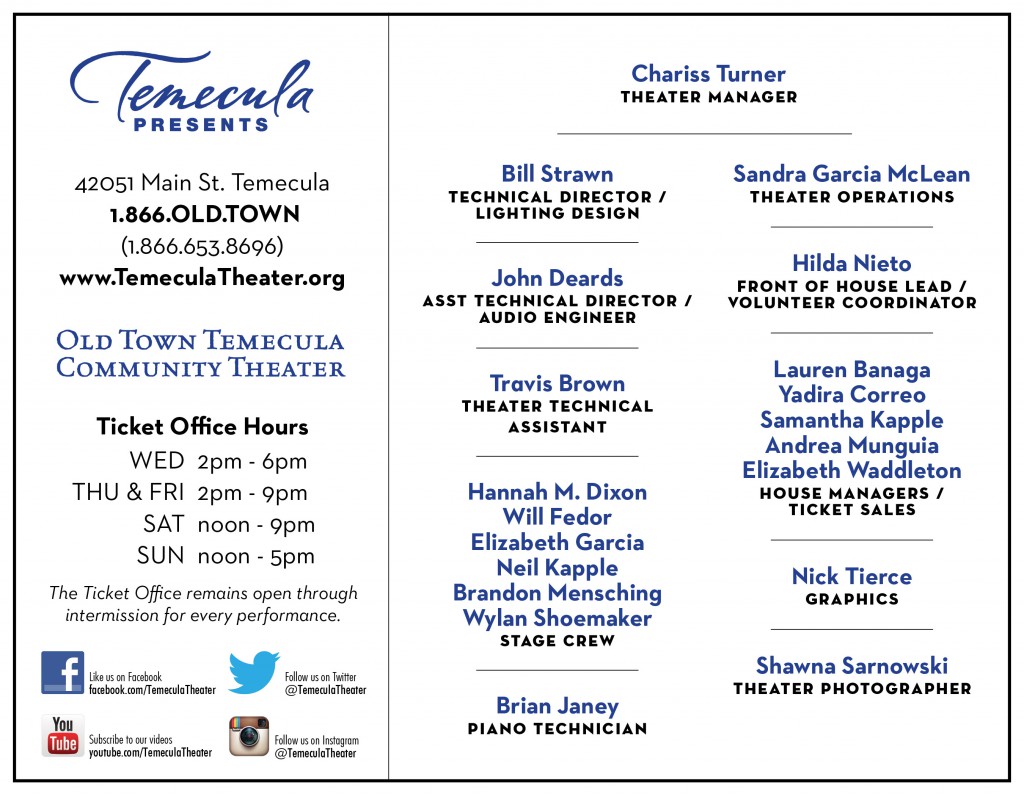
Pamela Martchev, flute
Terri Tunnicliff, clarinet
Ryan Simmons, bassoon
John Degnan, French Horn
Gioacchino Rossini (1792-1868)
Quartet No. 1
Allegro moderato
Andante
Rondo – Allegro
Vitaly Buyanovksy (1928-1993)
Espana from Four Improvisations From Traveling Impressions for solo horn
Ludwig van Beethoven (1770-1827)
Duo No. 1 in C Major for Clarinet and Bassoon
Allegro commodo
Larghetto sostenuto
Rondo: Allegretto
INTERMISSION
C. P. E. Bach (1714-1788)
Hamburger Sonata in G Major for flute and bassoon
Allegretto
Rondo – Presto
Robert Muczynski (1929-2010)
Six Duos for Flute and Clarinet
Matthew Dowie
“Time in Bloom” for Horn and Bassoon
American Premiere
Gioacchino Rossini
Quartet No. 6
Andante
Theme; Variations I-V; Finale

Page 2 of 9 « 1 2 3 4 5 » ... Last »



